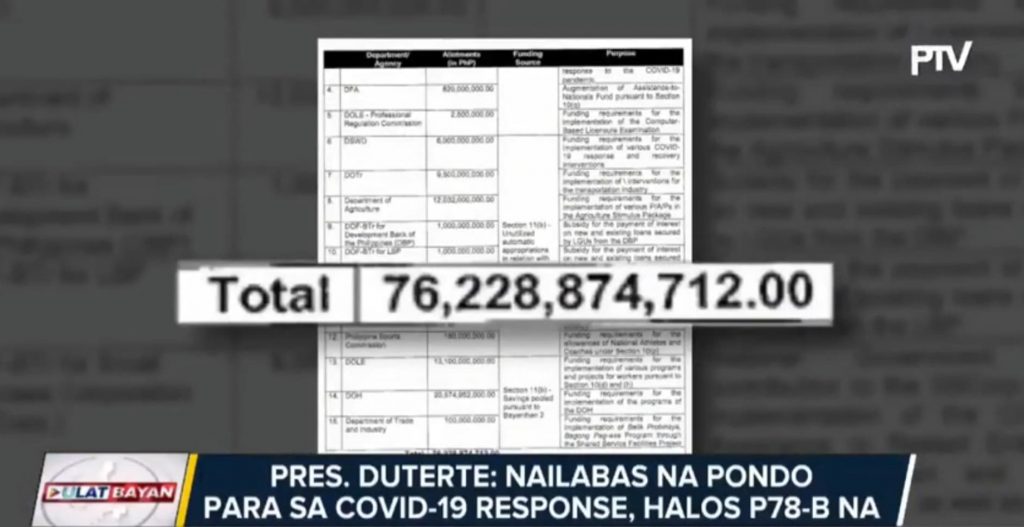The latest report of President Rodrigo Duterte to Congress show that the fund released for COVID-19 response under the Bayanihan to Recover as One Act (Bayanihan 2) has reached nearly ₱76.2 billion as of October 29.
Aside from the monies from Bayanihan 2 funds, around ₱1.7 billion was extracted from the 2020 national budget.
The Department of Health (DOH) has the largest allocation amounting to ₱20.5 billion for its COVID-19 programs such as contact tracing, testing, quarantine, and isolation facilities.
The daily specimen backlogs of the DOH declined by 65 percent in the previous weeks as the number of testing centers and laboratories increased. There are 153 COVID-19 laboratories nationwide as of October 23.

The DOH is also preparing for new testing technologies for far flung areas with limited access to RT-PCR laboratories
The Department of Labor and Employment (DOLE) received ₱13.1 billion for its CAMP, AKAP, and TUPAD programs.
The Department of Transportation (DOTr) was given ₱9.5 billion to subsidize qualified drivers, for free rides, and for Hatid Probinsya.
The Department of Finance (DOF) was allotted ₱8 billion for CARES program and other subsidies, while ₱6 billion was given to the Department of Social Welfare and Development (DSWD) for aid distribution.
Around ₱2.5 billion was released to the Department of the Interior and Local Government (DILG) for the hiring and training of contact tracers. As of October 27, there are 41,961 DILG-hired contact tracers nationwide and 256,717 LGU-hired contact tracers.
“Additional releases will be made as soon as the corresponding budget requests, together with the necessary supporting documents are submitted, consistent with existing budgeting laws, rules and regulations,” President Duterte stated in his report.
“The government shall sustain and continue to strengthen our capabilities to implement programs and projects which among others seek to reduce the adverse socioeconomic impact of COVID-19; enhance the capacity of the Philippine health care system to control and eliminate COVID-19, and enhance fiscal and monetary policies to sustain COVID-19 measures,” he added. – Report from Naomi Tiburcio
